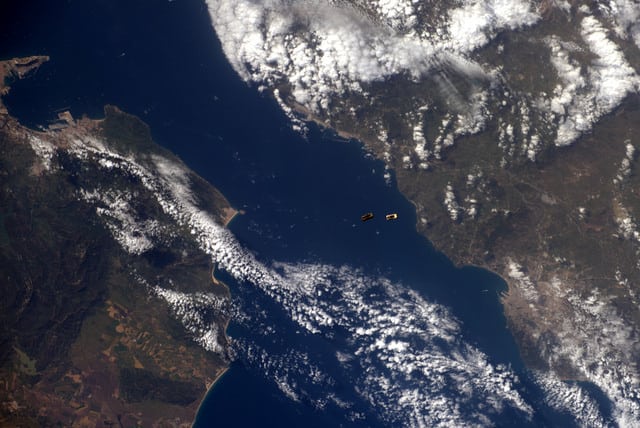Spire SmallSat Constellation to Improve Weather Forecasts

Spire satellites deployed from the ISS. Photo: ESA/NASA/Tim Peake
Spire Global announced it has successfully developed, tested, and deployed a constellation of nanosatellites with Global Navigation Satellite System (GNSS) receivers. The data from this growing constellation will augment the global observing system with measurements (vertical profiles) of atmospheric temperature, pressure, and water vapor via GNSS-occultation.
According to Spire, such vertical profiles with global reach improve the skill of weather forecasts. The constellation announced involves eight satellites capable of producing a minimum of 1,000 profiles each day while Spire’s launch schedule aims to take this number up to at least 100,000 profiles a day within two years, providing a daily vertical sounding of the atmosphere in each 100km by 100km square over the entire planet.
The methodology uses publicly funded and publicly-available research and development on GNSS Radio Occultation (GNSS-RO) carried out by various research groups, including that responsible for the ongoing Constellation Observing System for Meteorology, Ionosphere, and Climate (COSMIC).
These additional observations are part of Spire’s data service available both to national weather services, which provide warnings of extreme weather events and many other invaluable functions, as well as businesses that need to enhance their operations and mitigate the ever-increasing impact of weather. Spire’s data access models conform to the World Meteorological Organization’s Resolution 40, which governs the provision of meteorological data. For example, Spire’s “purchase once, distribute everywhere” license allows for unlimited worldwide re-distribution, thereby enabling data to be free at the point of use for public weather predictions.
The skill of weather forecasts has improved substantially over the past decades, fueled by publicly funded research. However, particular — and sometimes extreme — weather event forecasts can be of less than desired quality because of insufficient observational data from space to initialize the computer models. Spire’s goal in establishing this new data service is to enable further enhancements in forecast skill, thereby allowing users to have even greater confidence in weather forecasts.